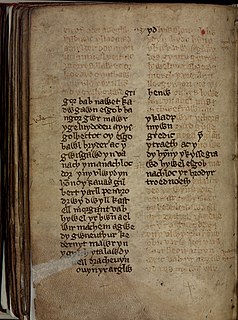 W
WBrut y Tywysogion, also known as Brut y Tywysogyon, is one of the most important primary sources for Welsh history. It is an annalistic chronicle that serves as a continuation of Geoffrey of Monmouth’s Historia Regum Britanniae. Brut y Tywysogion has survived as several Welsh translations of an original Latin version, which has not itself survived. The most important versions are the one in Robert Vaughan's Peniarth MS. 20 and the slightly less complete one in the Red Book of Hergest. The version entitled Brenhinoedd y Saeson combines material from the Welsh annals with material from an English source.
 W
WThe Chronicle of San Juan de la Peña is an Aragonese chronicle written in Latin around before 1359 in the monastery of San Juan de la Peña at the behest of Peter IV of Aragon. It was the first general history of Aragon and was probably designed both to justify the royal prerogatives of the Crown of Aragon against the baronage and to match the comparable Castilian work of a century earlier, the Estoria de España. Between 1369 and 1372, Navarro-Aragonese and Catalan translations were produced.
 W
WThe Chronicon Pictum is a medieval illustrated chronicle from the Kingdom of Hungary from the second half of the fourteenth century. It represents the international artistic style of the royal courts in the court of Louis I of Hungary.
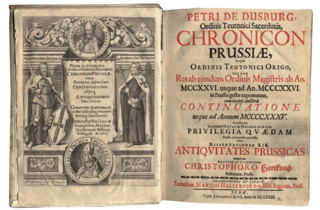 W
WChronicon terrae Prussiae is a chronicle of the Teutonic Knights, by Peter of Dusburg, finished in 1326. The manuscript is the first major chronicle of the Teutonic Order in Prussia and the Grand Duchy of Lithuania, completed some 100 years after the conquest of the crusaders into the Baltic region. It is a major source for information on the Order's battles with Old Prussians and Lithuanians.
 W
WThe Cronaca fiorentina di Marchionne di Coppo Stefani written by Baldassarre Bonaiuti is considered today as one of the best works written on the Black Death in Florence in the year 1348. It is the only known literary work by Bonaiuti. It was written in vulgar Latin. There is no information as to when he may have started his work, but he devoted much time on it in his retirement from about 1378 until his death, a period of seven years.
 W
WDe casibus virorum illustrium is a work of 56 biographies in Latin prose composed by the Florentine poet Giovanni Boccaccio of Certaldo in the form of moral stories of the falls of famous people, similar to his work of 106 biographies De Mulieribus Claris.
 W
WDe Monarchia is a Latin treatise on secular and religious power by Dante Alighieri, who wrote it between 1312 and 1313. With this text, the poet intervened in one of the most controversial subjects of his period: the relationship between secular authority and religious authority. Dante's point of view is known on this problem, since during his political activity he had fought to defend the autonomy of the city-government of Florence from the temporal demands of Pope Boniface VIII. The work was banned by the Catholic church in 1585.
 W
WDe Mulieribus Claris or De Claris Mulieribus is a collection of biographies of historical and mythological women by the Florentine author Giovanni Boccaccio, composed in 1361–62. It is notable as the first collection devoted exclusively to biographies of women in Western literature. At the same time as he was writing On Famous Women, Boccaccio also compiled a collection of biographies of famous men, De Casibus Virorum Illustrium.
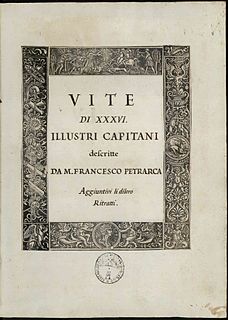 W
WDe viris illustribus is an unfinished collection of biographies, written in Latin, by the 14th century Italian author Francesco Petrarca. These biographies are a set of Lives similar in idea to Plutarch's Parallel Lives. The works were unfinished. However he was famous enough for these and other works to receive two invitations to be crowned poet laureate. He received these invitations on exactly the same day, April 8, 1341, one being from the Paris University and the other from the Roman Senate. He accepted the Roman invitation.
 W
WDe vita solitaria is a philosophical treatise composed in Latin and written between 1346 and 1356 by Italian Renaissance humanist Petrarch. It constitutes an apology of solitude dedicated to his friend Philippe de Cabassoles.
 W
WThe Directorium Inquisitorum is Nicholas Eymerich's most prominent and enduring work, written in Latin and consisting of approximately 800 pages, which he had composed as early as 1376. Eymerich had written an earlier treatise on sorcery, perhaps as early as 1359, which he extensively reworked into the Directorium Inqusitorum. In compiling the book, Eymerich used many of the magic texts he had previously confiscated from accused sorcerers. It can also be considered as an assessment of a century and half of official Inquisition in the "albigensian" country.
 W
WEpistolae familiares is the title of a collection of letters of Petrarch which he edited during his lifetime. He originally called the collection Epistolarum mearum ad diversos liber but this was later shortened to the current title.
 W
WThe Flores Historiarum is the name of two different Latin chronicles by medieval English historians that were created in the 13th century, associated originally with the Abbey of St Albans.
 W
WGenealogia deorum gentilium, known in English as On the Genealogy of the Gods of the Gentiles, is a mythography or encyclopedic compilation of the tangled family relationships of the classical pantheons of Ancient Greece and Rome, written in Latin prose from 1360 onwards by the Italian author and poet Giovanni Boccaccio.
 W
WThe Gesta comitum Barcinonensium et regum Aragoniae is a Latin chronicle composed in three stages by some monks of Santa Maria de Ripoll and recounting the reigns of the Counts of Barcelona from Wifred I (878–97) to James II (1291–1327), as late as 1299. It is the fawning history of the dynasty known as the House of Barcelona. In presenting the rulers of the county of Barcelona as the descendants of Charlemagne, the monks sought to justify their independent policy with respect to the King of France, their nominal sovereign. The Gesta is the chronological backbone.
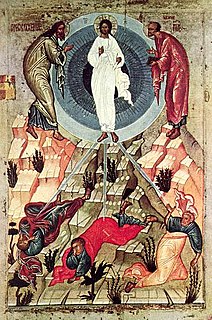 W
WHorologium Sapientiae was written by the German Dominican Henry Suso between 1328 and 1330. The book belongs to the tradition of Rhineland mystics and German mysticism. It was quickly translated into a range of European languages and it was one of the three most popular Spirituality books in the fourteenth and fifteenth century.
 W
WThe Liber Secretorum Fidelium Crucis is a Latin work by Marino Sanuto the Elder intended to inspire a revival of the Crusades. It has also been named as Historia Hierosolymitana and Liber de expeditione Terrae Sanctae, and Opus Terrae Sanctae, the last being perhaps the proper title of the whole treatise as completed in three parts or "books".
 W
WThe Liber sine nomine is a collection of nineteen personal letters written in Latin by the fourteenth century Italian poet and Renaissance humanist Petrarch. The letters being harshly critical of the Avignon papacy, they were withheld from the larger collection of his Epistolae familiares and assembled in a separate book. In this fashion, Petrarch reasoned, a reader could throw away this collection, and the other letters to friends could be preserved for posterity.
 W
WOmne Bonum is a 14th-century encyclopedia compiled in London. It survives in four volumes in the manuscripts BL Royal 6 E VI and VII, written by James le Palmer, identified on the basis of a colophon in the same hand in Bodleian Library Laud Misc. 165, clerk of the Exchequer mentioned between 1357 and 1375. The MSS. had the inventory number 1226 in the English Royal Library. It was acquired by the Upper Library at Westminster between 1542 and 1666 and was presented to the British Museum in 1757.
 W
WThe Pastorale (Pastoral) is a literary work that was written by Francesc Eiximenis in Valencia in Latin between 1397 and 1400. It was dedicated to the bishop of Valencia Hug de Llupià.
 W
WThe Speculum Humanae Salvationis or Mirror of Human Salvation was a bestselling anonymous illustrated work of popular theology in the late Middle Ages, part of the genre of encyclopedic speculum literature, in this case concentrating on the medieval theory of typology, whereby the events of the Old Testament prefigured, or foretold, the events of the New Testament. The original version is in rhyming Latin verse, and contains a series of New Testament events each with three Old Testament ones that prefigure it. It is one of the most common books found as an illuminated manuscript, and also in early printing in both blockbook and incunabulum forms.
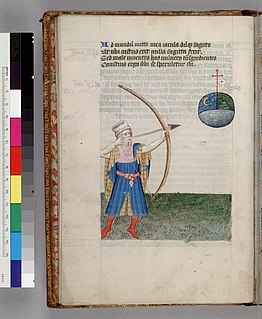 W
WVox Clamantis is a Latin poem of 10,265 lines in elegiac couplets by John Gower. The first of the seven books is a dream vision giving a vivid account of the Peasants' Rebellion of 1381. Macaulay described the remaining books: "The general plan of the author is to describe the condition of society and of the various degrees of men, much as in the latter portion of the Speculum Meditantis." Fisher concludes that books II-V were written in the 1370s while the author was writing similar passages in Mirour de l'Omme.